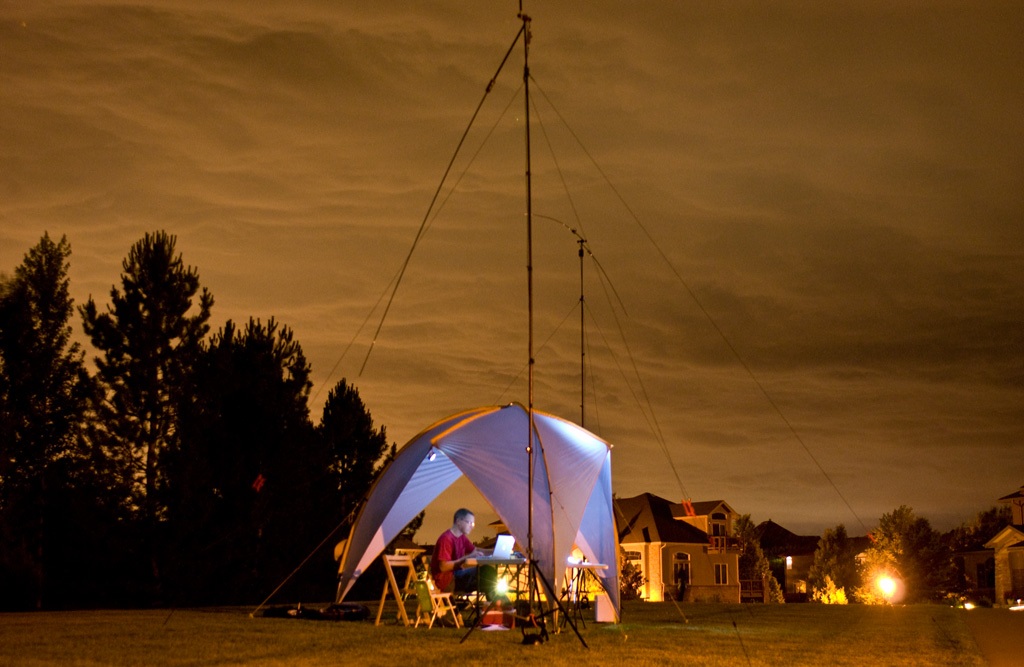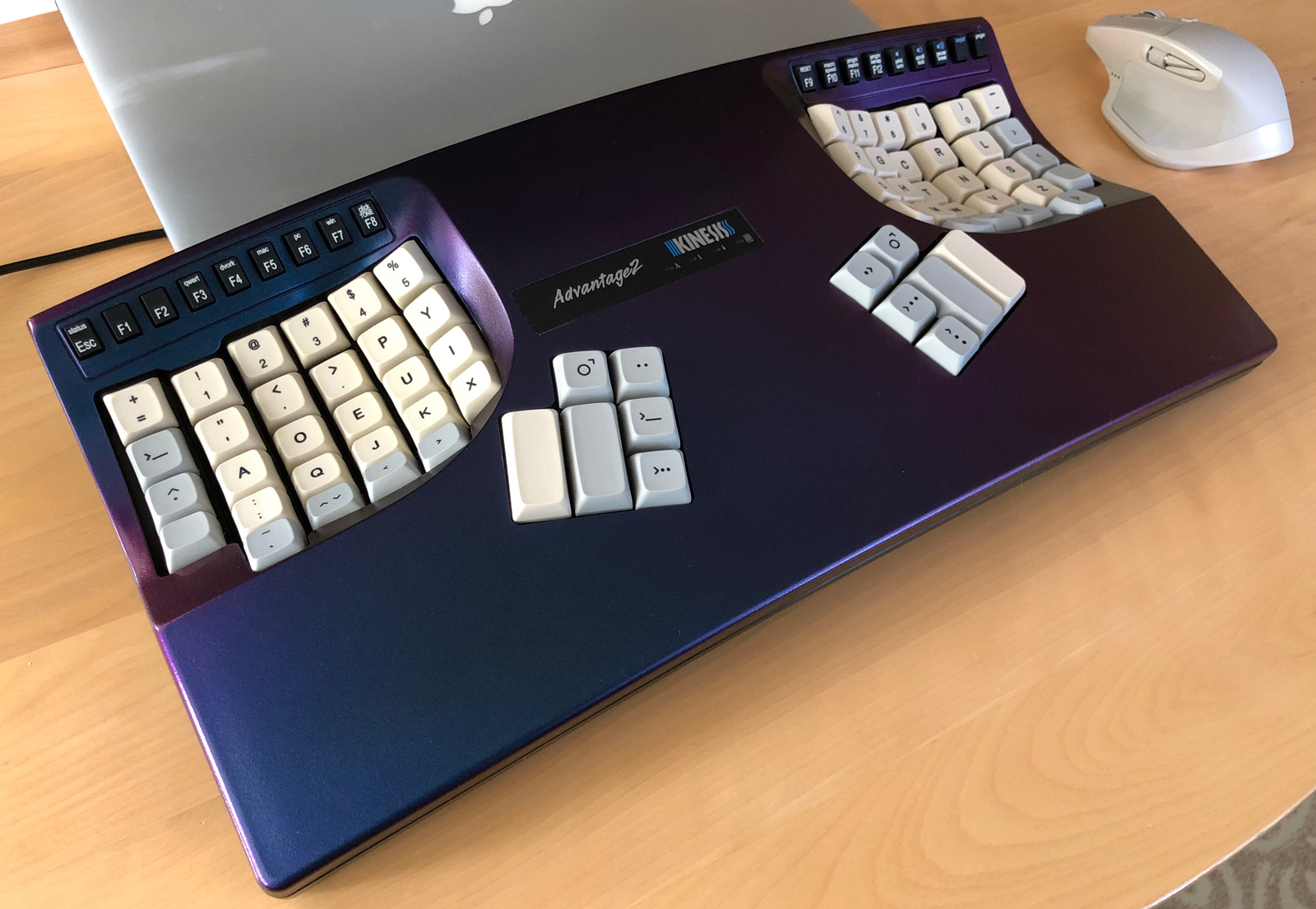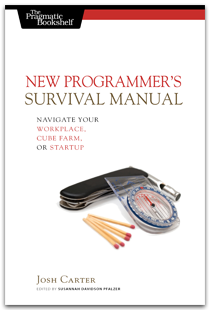
What do you say to two guys in a public park with two huge antennas and an improvised hut in the middle?
“Are you trying to talk to the aliens?"
We got that one about three times. The most common inquiry was, “umm, I have to ask, what are you guys doing?" We got that one about twenty times.
Last weekend my pal Joel (W4LL) and me (N0JDC) operated a ham radio station for ARRL Field Day in a park near my house. Field Day is an event where amateur radio operators across North America simulate emergency conditions — improvised locations, no AC power, getting chewed on by mosquitos — and attempt to contact as many other stations as possible.
I roped Joel into coming out to my neck of the woods in Colorado to operate a station. I rigged my radio and computer to operate from batteries and we both owned Buddipole portable antenna systems. Then there were the necessities of outdoor operation: a sun shade, table, chairs, bug spray, sodas and beer.

On noon Saturday we began. We set up station and set the antennas for 20m operations. We configured one antenna as a dipole, the other as a vertical. According to my modeling (separate article to follow) the dipole would get good gain but most of the signal would go straight up. Great for local work, not so great for distance. The vertical would have lower gain but the signal’s take-off angle would be much lower, so we could get better distance from it. Our in-field experience proved the models correct.
SSB voice operations proved fruitful but time-consuming. There were many pile-ups which we could work successfully, but each took a good amount of time. PSK31 digital operations proved more efficient. The Kenwood TS-480’s filtering was superb at isolating PSK31 signals, so it was easy to notch in stations and work them. The DM780 software was also exceptional for time-efficient operation. Once I set up macros for the necessary Field Day exchanges, QSOs required very little (if any) typing. Joel still has a hand for morse code, so we hit some stations with that, too.
We set up the dipole for 15m and had a go there. We hit W0DK Boulder Amateur Radio Club, which was operating in the foothills maybe 15 miles away. It was early in the day and they joked that we were the longest distance QSO they had gotten so far. We also had an opening to Washington state and worked several stations there. We heard a station calling “CQ CQ any stations not participating in Field Day…”

As evening fell Joel and I debated how long we’d go into the night. In our younger days this wouldn’t be a question, we’d go all night. But these days we’re married with children and, basically, wimps at staying up late. We switched to 40m and kept going until Joel fell asleep in his chair at 1:00am, then turned in.
Joel reports waking up from a dream about Field Day at 5:30am, and he charged outside to get the station set up and back on the air. I awoke to my parrot’s chattering at 6:00am, saw Joel outside, and wandered out myself. Then promptly wandered back in for coffee. Then, rested and caffeinated, it was time to keep going.

Sunday mid-morning we wanted to send a NTS message to my ARRL section manager on a local VHF traffic net. I hadn’t checked this VHF repeater before, and discovered with great alarm that I couldn’t hit the repeater from my handheld radio. We quickly configured one of our Buddipole antennas as a 2m dipole but I still wasn’t getting through well — the antenna polarization was wrong. We wound up rigging my radio’s “rubber duck” antenna to the Buddipole mast, raising that to full height, and I sat at the bottom with the radio. I could just barely make intelligible transmissions on the repeater, and got our NTS message out. That was the first time I participated in a radio net.
Shortly after, W1AW was to transmit the Field Day bulletin on PSK31. We had tried copying the voice bulletin twice before with no luck — too many other stations were on adjacent frequencies and stomped out W1AW. But with PSK31’s extremely narrow bandwidth and my radio’s filtering, we easily isolated the W1AW transmission and copied it 100%.
Nearing Sunday noon we were operating with one guy on the radio, the other napping on the grass. At noon all radio traffic promptly stopped. We packed up and went out for lunch. A neighbor was there and asked,
“Did you reach the aliens?"
Joel replied, without missing a beat, “Yes, they’ll be here next week."
Lessons Learned
A couple things to remember for next time:
-
If you rig a vertical whip with a counterpoise whip on one side, raise it on a mast and don’t guy it, it’ll fall over.
-
Figure out how to light your operating area before night falls.
-
If you’re planning on hitting a VHF net repeater, make sure you can hit the repeater well ahead of time.
-
Neighbors that bring you brownies at 6:00am are cool.
Gear List
-
Kenwood TS-480SAT transceiver
-
Buddipole antenna system, deluxe kit with long whips and long mast (x2)
-
MacBook Pro laptop, Ham Radio Deluxe + DM780 (in Parallels virtual machine)
-
Costco 80Ahr marine battery (x2)
-
N8XJK boost regulator to power radio
-
Linear LTC3780 buck/boost regulator to power laptop
-
WWII era straight key




Share this post
Twitter
Google+
Facebook
Reddit
LinkedIn
StumbleUpon
Pinterest
Email